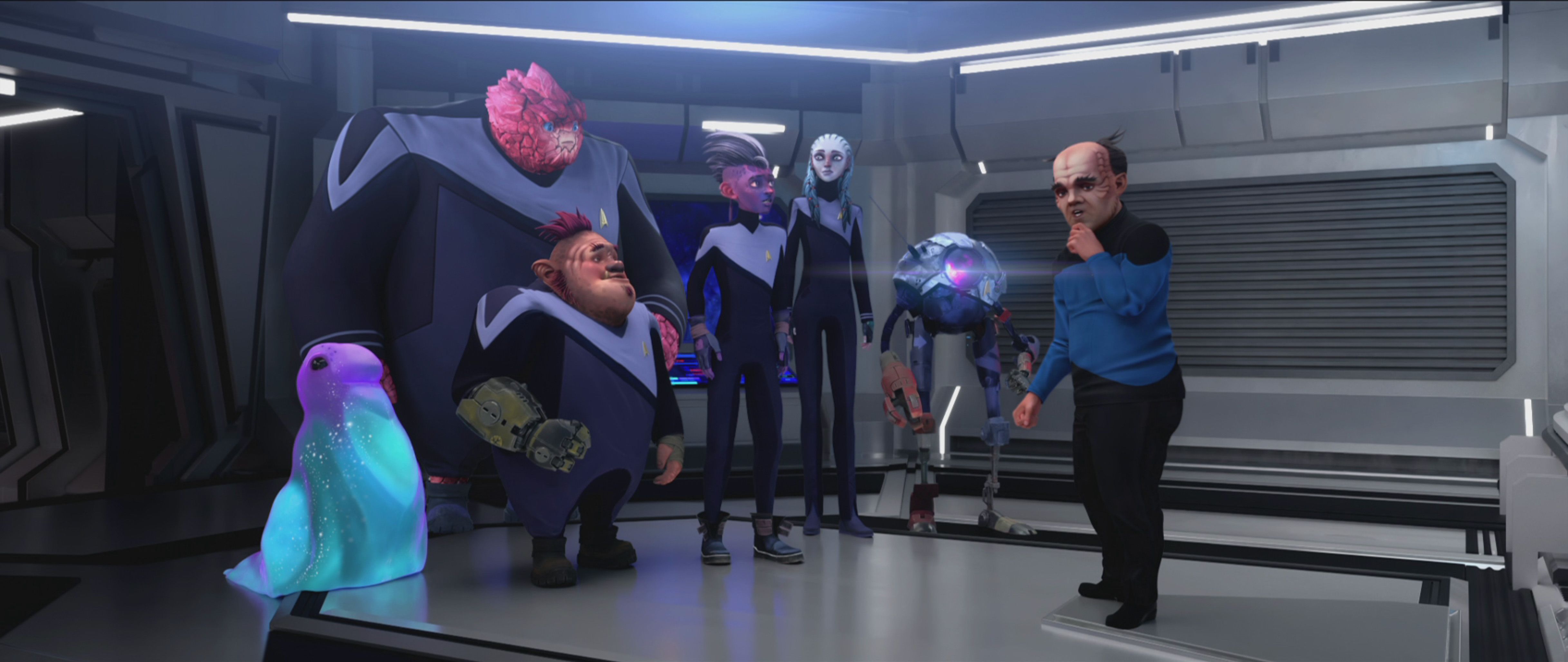Starting Your Story: What Makes Episode (Season 1, Episode 1) So Special?
Have you ever thought about what it takes to truly kick off a captivating story? Whether you're crafting a tale for others to enjoy or just beginning a new adventure as a reader, the very first installment, that initial "episode (season 1, episode 1)," holds a unique kind of power. It's the moment where everything begins, where characters take their first breath, and where the world of the story starts to unfold. This is that, first impression, the one that can make someone want to stick around for more, or perhaps move on. It’s a very crucial point for any narrative, really.
In the vast landscape of storytelling, the term "episode" can mean quite a few things, you know? It might be a single segment of a TV show, a chapter in a podcast, or even a 'level' in a game, like in some reinforcement learning concepts where an intelligent agent starts playing until it wins or it's game over. However, for many creative people and passionate readers, "episode" often brings to mind the vibrant, interactive stories found on platforms where you get to make choices that shape the plot. That's what we're going to focus on here today, the kind of first episode where you're building a world or stepping into one, with all its possibilities.
So, as we look into the world of interactive storytelling, especially when it comes to the very beginning of a series, we'll talk about what makes that first episode so impactful. We'll touch on the dreams of authors just starting out, the small hurdles they face, and what makes readers feel truly connected to a story right from the get-go. It’s a bit of an art and a bit of a science, getting that first one just right, and honestly, it's pretty exciting to think about.
Table of Contents
- The Magic of Starting: Why Episode 1 Matters
- Behind the Scenes: The Nitty-Gritty of Story Creation
- What Readers Really Want: Interactivity and Engagement
- Community Support and Shared Experiences
- Tips for a Stellar Episode 1 Experience
- Frequently Asked Questions About Episode 1
The Magic of Starting: Why Episode 1 Matters
The first episode of any story, whether it’s a TV show, a book, or an interactive tale, truly sets the whole mood. It’s where you meet the main people, get a sense of the setting, and feel the first stirrings of the story’s main problem or journey. For many, this opening chapter is what decides if they’ll keep reading or watching. It needs to grab attention, almost instantly, and make you curious about what’s coming next. You want to feel a connection, right away, to the characters and their world. It’s a pretty big deal, this first step.
Crafting That First Impression
When you're creating an interactive story, especially that very first episode, you're essentially building a welcoming party for your readers. You want them to feel at home, but also excited and a little bit intrigued. This means making sure the visuals are pleasing, the music fits the mood, and the words flow well. It’s almost like setting the stage for a play, where every detail matters in getting the audience ready for the show. The intensity of your script, rather than just the number of lines, can make a huge difference here. A powerful opening scene, for example, can stick with someone long after they've finished reading.
The Author's Journey Begins
For an author, writing that first episode is often filled with a mix of excitement and a little bit of struggle. It's the moment when all those ideas floating in your head start to take a solid shape. Many authors are making their very first story, and it can be quite a learning curve. They're figuring out how to use the tools, how to make characters move, and how to tell a story that makes sense and keeps people interested. It’s a creative process, yes, but it also involves a lot of technical learning, which can be challenging but also very rewarding when things click into place.
Behind the Scenes: The Nitty-Gritty of Story Creation
Making an interactive story, especially for a platform like Episode, involves more than just writing words. There's a whole lot of coding and technical work that goes on behind the scenes. It's about bringing your vision to life, frame by frame, and that can sometimes come with its own set of little puzzles to solve. So, it's not always just about the grand ideas; sometimes it's about making sure a character walks just right, or that a piece of scenery appears exactly where you want it.
Getting Your Code Just Right
One of the biggest parts of creating an interactive story is the coding. It’s how you tell the app what to do: when a character speaks, when they move, or when a choice pops up on the screen. For beginners, this can be a bit tricky. Imagine trying to make an overlay, like a picture or a prop, rotate to a specific spot, but it just spins all over the screen instead of staying in place. This kind of thing happens, and it can be a source of frustration, but also a chance to learn and get better at using the tools. A lot of people, myself included, wish there was an easier way to code sometimes, which would surely help many new creators.
Making Overlays Behave
Overlays are those extra visual elements that add so much to a scene, like a coffee cup on a table or a specific background detail. Getting them to appear, disappear, and move exactly as you picture can be a real test of patience. It’s not uncommon for an overlay to refuse to rotate to the spot you want it to, instead spinning wildly. This can make testing your story on the app quite hard, especially if you can't even see your story on the app to check if your code is working as intended. These small technical hiccups are a pretty common part of the author's journey, honestly.
Character Connections and Choices
Building characters that feel real and have strong connections with each other is another big piece of the puzzle. Readers often enjoy seeing how relationships grow and change. Beyond just their personalities, giving readers choices that affect the characters’ paths can make the story feel much more personal. This involves a lot of thought about how each decision will branch out and change the story. It's about making the reader feel like they're truly a part of what's happening, which is a big part of what makes interactive stories so appealing.
When to Bring in the Love Interest
A question that often comes up for authors writing their first story is when to introduce the love interest. Some stories bring them in right at the end of the first episode, almost as a little tease for what's to come. Others might wait a bit longer, letting the main character develop on their own first. There’s no single right answer, really; it often depends on the story's pace and what kind of mood you want to set. It's a strategic choice, one that can significantly shape the reader's early feelings about the story and its potential romantic arcs.
What Readers Really Want: Interactivity and Engagement
For readers, a big part of the fun in interactive stories comes from feeling like they have a say in what happens. It’s not just about reading words on a screen; it’s about making choices, seeing the consequences, and feeling like the story is, in some small way, their own. This active participation can make a story feel much more alive and personal. It’s what keeps people coming back for more, because they’re not just observers, they’re participants. This is why interactivity is often considered a very key element.
The Gender Choice Debate
One common choice authors offer is allowing readers to pick the gender of their main character. This can make the story feel much more personal and inclusive for many. It's a way to let readers see themselves in the story, which can deepen their connection to the narrative. While some might prefer a set character, giving the option to choose a gender often makes the experience more interactive and, frankly, more fun for a wider audience. It’s a simple choice, but it can have a pretty big impact on how a reader feels about the story from the very start.
Feeling Part of the Story
Beyond just choosing a gender, readers generally enjoy any choice that makes them feel more involved. This could be deciding what a character says, where they go, or even what they wear. These small decisions add up to a feeling of ownership over the story. It’s a bit like playing a game where your actions truly matter. When readers feel like their choices are shaping the narrative, they become more invested, making the first episode, and indeed the entire series, a much more memorable and engaging experience. This kind of engagement is what many authors strive for, you know, to really pull readers in.
Community Support and Shared Experiences
The world of interactive storytelling isn't just about individual authors and readers; it's also a thriving community. People share their issues, their victories, and their creative ideas. This shared space provides a lot of support, especially for those just starting out. It’s a place where you can ask for help with a tricky bit of code, get feedback on your writing, or just share your woes about character creation. This sense of togetherness is a very important part of the experience for many.
Celebrating Author Efforts
There are many ways the community comes together to celebrate the hard work of authors. Events like the "Episode Awards" are a fantastic way to recognize the dedication and creativity that goes into making these stories. It's not just about the finished product, but also all the behind-the-scenes effort that authors put in. These celebrations help to encourage new writers and show appreciation for those who spend countless hours crafting engaging narratives. It’s a nice way to say "thank you" for all the stories shared.
Sharing the Ups and Downs
It's natural for authors to face struggles, especially when writing their first story. Whether it’s trouble with coding, getting feedback, or just feeling stuck, having a place to share these issues can be incredibly helpful. Forums and threads where people discuss their "issues, grievances and woes about character creation" are valuable resources. This shared experience helps new authors feel less alone and provides a space for seasoned creators to offer advice. It’s a very supportive environment, in a way, where everyone is trying to make great stories.
Tips for a Stellar Episode 1 Experience
Whether you're the one writing the story or the one reading it, there are a few things that can make that first episode truly shine. For authors, it's about drawing readers in and keeping them curious. For readers, it's about knowing what to look for to find stories that will truly captivate them. It’s almost like a dance between the creator and the audience, where both play a part in making the experience memorable. So, here are some thoughts on how to make that first encounter with a story a really good one.
For Authors: Hooking Your Audience
When you're writing your very first episode, think about making a strong opening. Introduce your main character quickly, give a hint of the central conflict, and perhaps add a surprising moment. Don't be afraid to be a little bit bold with your ideas. Also, consider the reader's preferences; offering choices like gender selection can truly boost interactivity. And remember, sometimes the impact comes more from the feeling you create than from a lot of words. Getting feedback on your early chapters can be super helpful too, as another set of eyes might spot things you missed. You can learn more about story pacing on our site, which is pretty useful for first episodes.
For Readers: Finding Your Next Favorite Tale
For those who love to read interactive stories, the first episode is your window into a new world. Pay attention to how the story starts; does it grab you right away? Look for stories that offer choices that feel meaningful, as this often means a more engaging experience. Also, take note of the character relationships; strong bonds can make a story much more compelling. If you're looking for new stories, check out community recommendations or awards threads, as these often highlight truly well-crafted tales. You might also find some great tips on finding new stories on our other pages.
Frequently Asked Questions About Episode 1
People often have questions about the first episode of a story, especially when it comes to interactive narratives. Here are some common things people wonder about, which might help clarify some points for both authors and readers.
When is the best time to introduce a love interest in the first episode?
Well, it really depends on your story's flow and what you want to achieve. Some authors like to bring in the love interest right at the end of the first episode, almost as a teaser for what’s to come. Others might wait a bit longer, giving the main character more time to establish themselves before a romantic plot starts to develop. There's no single "best" time; it’s a creative choice that should fit your narrative’s overall rhythm. It's almost like deciding when to drop a big reveal, you know?
Do readers truly prefer choosing a character's gender in interactive stories?
Many readers do find that choosing a character's gender makes the story feel much more personal and interactive. It allows them to see themselves more directly in the narrative, which can deepen their connection to the story. While not every reader needs this option, offering it can certainly broaden your story's appeal and make it feel more engaging for a wider audience. It's a pretty common request, actually, from what I've seen.
What are some common struggles for new authors writing their first episode?
New authors often face a few hurdles when creating their first episode. These can include getting the coding just right, like making overlays rotate correctly, or simply figuring out the best way to structure their story. There’s also the challenge of introducing characters effectively and deciding on the right pacing for key events. It's a lot to learn at once, but with practice and community support, these challenges become much easier to manage. Many authors struggle with similar things, so you're definitely not alone if you're finding it a bit tough.
As we wrap up our chat about episode (season 1, episode 1), it’s clear that this initial chapter is more than just a beginning; it’s a promise. It’s where authors lay the groundwork for their creative visions, facing little technical puzzles and making big story decisions. For readers, it’s the moment they decide if a new world is worth exploring, if they want to make choices and feel truly part of the narrative. It’s a very special connection, this first episode, that sets the tone for everything that follows. So, if you're an author, keep pouring your heart into those first pages; they truly matter. And if you're a reader, keep looking for those stories that grab you from the very start. Happy reading and writing, everyone! Today's date is .

The Flash Season 9 Episode 1 Review

Star Trek: Prodigy Season 1 Episode 11 Review: Increasing Stakes and

The Invaders Season 1 Episode 1 - Where to Watch and Stream Online